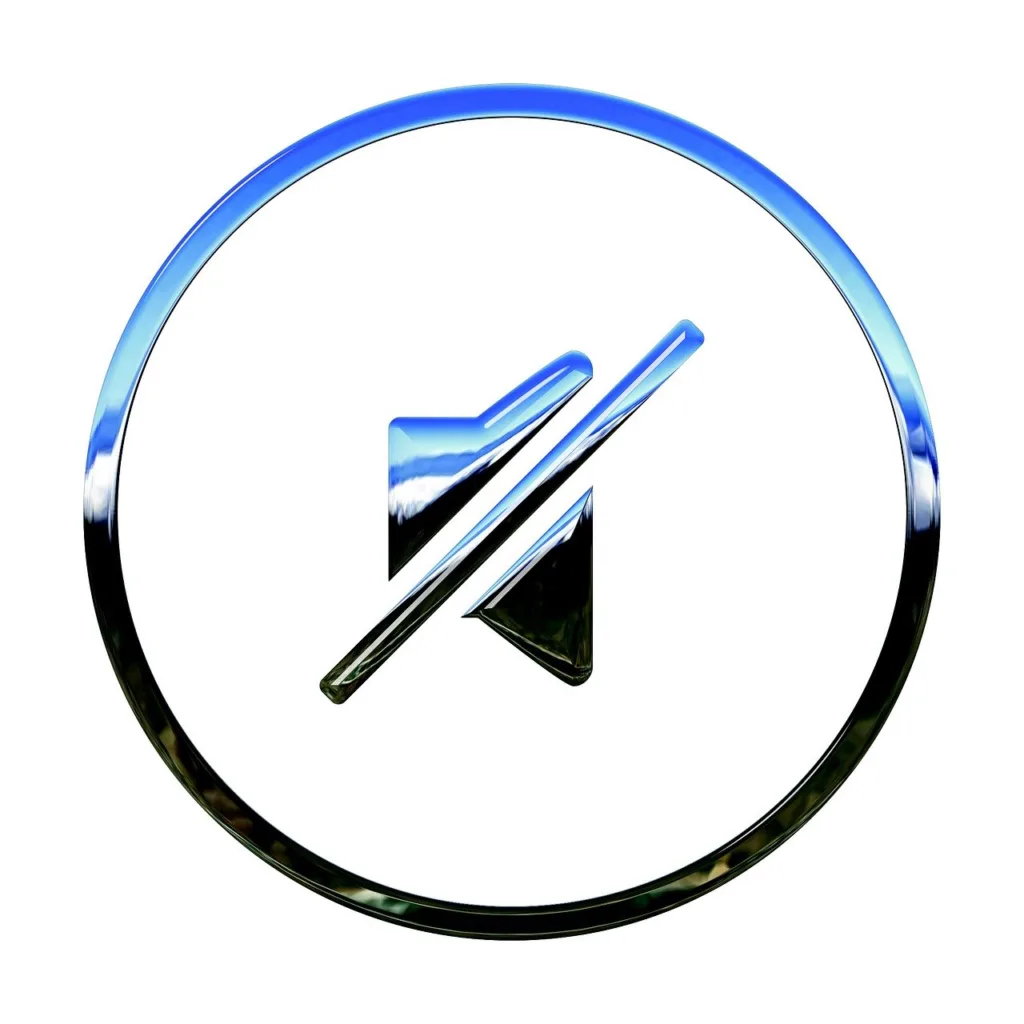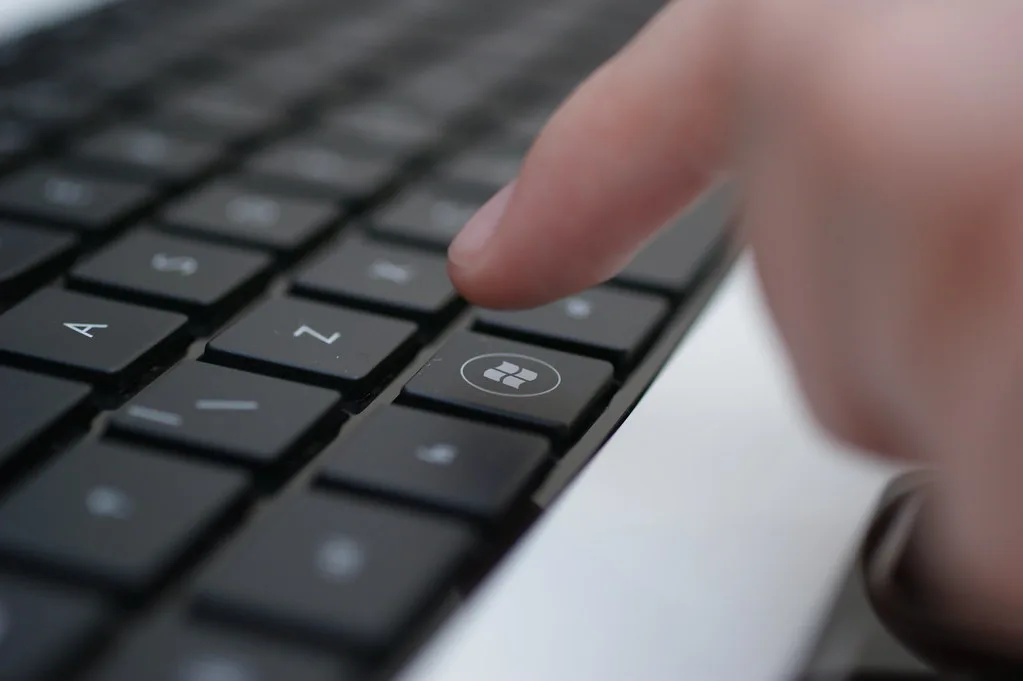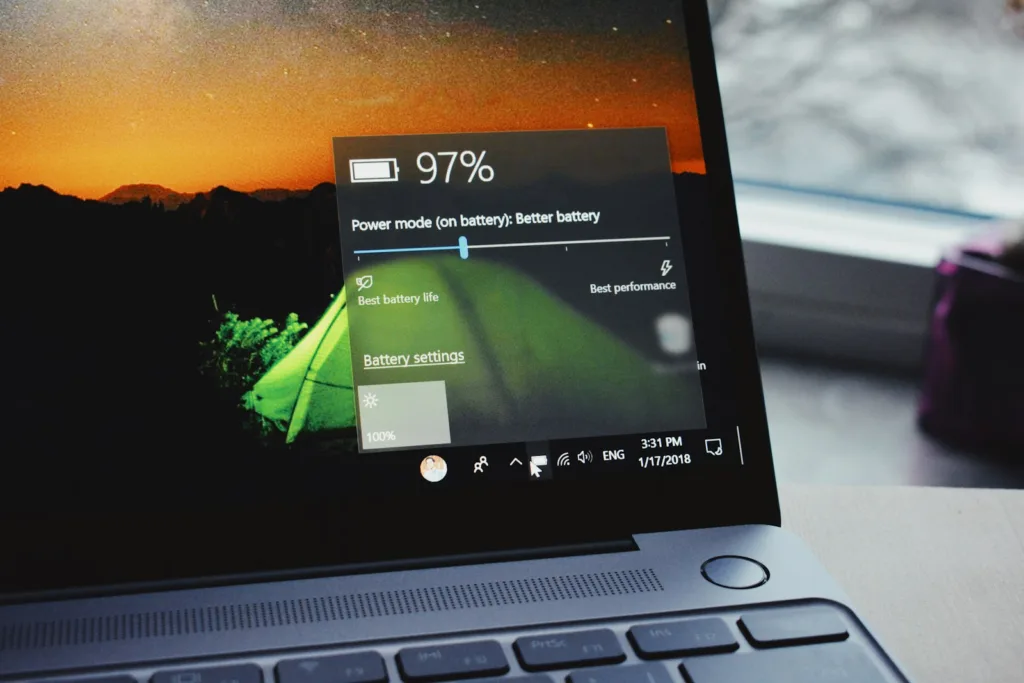This website may contain affiliate links, which means I may receive a commission if you click on a link and make a purchase. While clicking on these links won't cost you any extra money, they will help me keep this site up and running. Your support is appreciated!
Are you tired of constantly reaching for your charger while on-the-go? Look no further, because we’ve got the perfect solution to help maximize your Windows laptop’s battery life. By making a few simple tweaks and adjustments, you can get the most out of your battery and keep on working, browsing, and streaming for longer periods of time. Say goodbye to those low battery warnings and hello to extended productivity! Let’s dive into some easy and effective ways to optimize your Windows for better battery life.
Table of Contents
- Unleash the Power Saver Plan: Your First Step to Longer Battery Life
- Dimming to Win: The Bright Idea That Extends Your Charge
- Silent Symphony: How Muting Sounds Can Save Battery Notes
- Crafting a Sleep Schedule for Your PC to Dream On
- Disabling Hungry Apps: Starve the Battery Drainers
- Wi-Fi Waves Away: Turning Off Network Connectivity for Oceanic Battery Gains
- Update Your Way to Efficiency: The Battery Boosting Benefits of Keeping Current
- Visual Effects or Battery Life? Less Flash for More Time
- Lean and Mean: The Art of Unloading Unnecessary Startup Programs
- Keep it Cool: How Heat Management Can Lead to a Battery Life Breakthrough
- Questions & Answers About How to Optimize Windows for Better Battery Life
- To Wrap It Up
Unleash the Power Saver Plan: Your First Step to Longer Battery Life
Are you tired of constantly running out of battery on your Windows laptop? It’s time to unleash the power saver plan and take the first step towards longer battery life. By optimizing your Windows settings, you can significantly extend the lifespan of your battery and enjoy more productive hours on your device.
The power saver plan is a built-in feature in Windows that allows you to reduce the energy consumption of your device, ultimately leading to longer battery life. By activating this plan, Windows will automatically adjust various settings to minimize power usage without compromising performance. Here’s how to get started:
- Go to the Control Panel and select the “Power Options” menu.
- Choose the “Power Saver” plan to activate it.
- Customize the plan by adjusting settings such as turning off the display and putting the computer to sleep after a certain period of inactivity.
- Make sure to save your changes and keep an eye on your battery life to see the improvement.
In addition to activating the power saver plan, there are other ways to optimize Windows for better battery life. For example, reducing the screen brightness, disabling unnecessary background apps, and managing your power settings can all contribute to saving power. With these simple tweaks, you can make your battery last longer and enjoy a more efficient computing experience.
When it comes to optimizing Windows for better battery life, every little adjustment can make a big difference. By implementing these changes and making the most out of the power saver plan, you can maximize the lifespan of your battery and enjoy longer hours of productivity on your Windows device. So, why wait? Unleash the power saver plan and start seeing the benefits of a longer-lasting battery today.
Dimming to Win: The Bright Idea That Extends Your Charge

When it comes to optimizing your Windows settings for better battery life, one simple yet effective strategy is to dim your screen. By reducing the brightness of your display, you can significantly extend the amount of time your laptop or tablet can run on a single charge. In addition to saving power, dimming your screen also reduces eye strain and can make using your device more comfortable in a variety of lighting conditions.
To optimize your Windows device for better battery life, follow these steps to adjust the screen brightness:
- Open the Control Panel or Settings app and navigate to the “Display” or “Brightness & Color” section.
- Use the slider to adjust the screen brightness to a level that is comfortable for you while still conserving power.
- Consider enabling the “Adaptive Brightness” option, which automatically adjusts the screen brightness based on ambient light conditions.
Take advantage of the benefits of dimming your screen, but keep in mind that there are a few trade-offs to consider. While dimming your screen can extend your battery life, it may also make it more difficult to see in brightly lit environments. Additionally, some users may prefer a brighter display for tasks that require accurate color representation or detailed graphics.
Overall, dimming your screen is a simple and effective way to optimize your Windows device for better battery life. By adjusting your display settings, you can maximize the time between charges and enjoy a more comfortable viewing experience. So, the next time you’re working on the go, remember to dim to win!
Silent Symphony: How Muting Sounds Can Save Battery Notes

When it comes to optimizing Windows for better battery life, every small adjustment can make a big difference. One often overlooked tweak that can help you save precious battery power is muting unnecessary sounds on your device. Not only does this simple change help to reduce the power drain on your system, but it also provides a more serene and distraction-free user experience.
Here are a few ways that muting sounds on Windows can help you save battery life:
- Decreased power usage: The audio hardware in your device requires power to function, and by muting sounds, you can reduce the strain on your battery, allowing it to last longer between charges.
- Eliminates background noise: By muting sounds, you can create a quieter environment, which can help you focus more easily on your tasks and reduce the mental strain of constant auditory stimuli.
- Extends hardware lifespan: Less strain on your audio hardware means a longer lifespan for your device. By reducing the usage of your hardware, you can help to prolong the overall longevity of your device.
To mute sounds on your Windows device, simply follow these steps:
- Click on the speaker icon in the bottom right corner of your screen to access the volume control settings.
- Adjust the volume slider to the lowest setting, or click the speaker icon to mute all sounds.
- You can also go into your device’s settings to configure which specific sounds you want to mute, such as system sounds, notifications, or app alerts.
By muting unnecessary sounds on your Windows device, you can optimize your system for better battery life and create a more peaceful and focused user experience. So, next time you’re looking to squeeze a little more juice out of your battery, consider giving the silent symphony a try. Your battery (and your peace of mind) will thank you.
Crafting a Sleep Schedule for Your PC to Dream On

Optimizing your Windows operating system for better battery life is crucial for getting the most out of your laptop or PC. One way to achieve this is by crafting a sleep schedule for your device. By doing so, you can ensure that your PC is not draining unnecessary power when it is not in use, ultimately prolonging its battery life. Below, we’ll discuss how to set up a sleep schedule for your Windows PC so that it can dream on and conserve power more effectively.
First, open the Power Options menu on your Windows device by clicking on the battery icon in the taskbar and selecting “Power Options.” From there, you can choose a power plan that is optimized for battery life, such as the “Power saver” plan. This plan reduces your PC’s performance to save energy and maximize battery life when it’s not plugged in.
Next, adjust the sleep settings by clicking on ”Change plan settings” next to your selected power plan. Here, you can set the time intervals for when your PC should enter sleep mode after a period of inactivity. For example, you can configure your PC to enter sleep mode after 10 minutes of inactivity when running on battery power, and after 30 minutes when plugged in.
It’s also important to enable hibernate mode for your Windows PC, as this can save even more power compared to sleep mode. To enable hibernate mode, go to the Power Options menu, click on “Choose what the power buttons do,” and then select “Change settings that are currently unavailable.” From there, you can check the box next to “Hibernate” to enable this power-saving feature.
Crafting a sleep schedule for your Windows PC is a simple yet effective way to optimize your device for better battery life. By adjusting power settings and enabling sleep and hibernate modes, you can ensure that your PC conserves power when it’s not in use, ultimately extending its battery life and enhancing its overall performance.
Disabling Hungry Apps: Starve the Battery Drainers
Have you ever noticed that some apps seem to drain your laptop’s battery faster than others? These “hungry apps” can be a real nuisance, but there are ways to disable them and starve the battery drainers. By optimizing Windows for better battery life, you can extend the time between charges and make the most of your laptop’s energy efficiency.
One way to disable hungry apps is to use the built-in Task Manager in Windows. You can see which apps are using the most resources and shut them down if they’re not essential. Another option is to adjust the power settings in Windows, so that your laptop goes into sleep mode or hibernation more quickly when it’s not in use. This can help to conserve battery life and optimize Windows for better energy efficiency.
In addition to managing hungry apps, you can also optimize Windows for better battery life by adjusting the display settings. Lowering the screen brightness and reducing the screen timeout can help to save power and extend battery life. You can also disable certain features like Bluetooth and Wi-Fi when they’re not in use, as these can drain the battery unnecessarily.
By taking these steps to optimize Windows for better battery life, you can make the most of your laptop’s energy efficiency and enjoy longer battery life between charges. Whether you’re working on the go or just want to make the most of your laptop’s battery, these tips can help you to starve the battery drainers and get the most out of your device.
Wi-Fi Waves Away: Turning Off Network Connectivity for Oceanic Battery Gains
Are you tired of constantly searching for a power outlet to keep your laptop alive? Say goodbye to that struggle with a few simple tips on how to optimize Windows for better battery life. By turning off unnecessary network connectivity, you can significantly extend the lifespan of your device’s battery.
First, let’s talk about the impact of Wi-Fi on your battery life. Keeping your device connected to a network drains its battery at a faster rate, especially if you’re not actively using the internet. By disabling Wi-Fi when you’re not accessing the web, you can conserve precious battery power. Here’s a step-by-step guide to optimizing Windows for better battery life by turning off network connectivity:
Step 1: Click on the Wi-Fi icon in the taskbar
Step 2: Select the Wi-Fi network you’re currently connected to
Step 3: Click on “Disconnect”
It’s as simple as that! By disconnecting from the Wi-Fi network when you’re not using the internet, you can save valuable battery life and ensure that your device stays powered for longer periods. Of course, there are times when you’ll want to be connected to Wi-Fi, but in those moments when you’re focused on other tasks, turning off network connectivity can make a world of difference.
Update Your Way to Efficiency: The Battery Boosting Benefits of Keeping Current

Are you tired of constantly having to search for a power outlet to charge your Windows laptop? Optimize Windows for better battery life and enjoy the battery-boosting benefits of keeping current with these simple steps.
First, check for Windows updates regularly to ensure your operating system is running efficiently. Microsoft releases updates to fix bugs, improve performance, and enhance battery life. Open the Settings app, go to Update & Security, and click on Windows Update to check for the latest updates.
Next, optimize your power settings to maximize battery life. Open the Control Panel, go to Power Options, and select a power plan that prioritizes battery life, such as the Power Saver plan. You can also customize your power plan to further optimize Windows for better battery life by adjusting settings such as screen brightness, sleep mode, and system cooling policy.
Another way to optimize Windows for better battery life is to manage startup programs. Open the Task Manager, go to the Startup tab, and disable any unnecessary programs that launch automatically when your computer starts. This can help reduce the strain on your battery and improve overall system performance.
Finally, consider using a battery optimization tool to automate the process of optimizing Windows for better battery life. These tools can help manage power settings, reduce background activity, and optimize system performance to maximize battery life. Look for reputable battery optimization software that is compatible with your Windows laptop for the best results. With these simple steps, you can optimize Windows for better battery life and enjoy longer-lasting battery power on your laptop.
Table: Battery Saving Tips
| Tip | Description |
|---|---|
| Check for Windows Updates | Regularly updating your Windows operating system can improve performance and battery life. |
| Optimize Power Settings | Customize your power plan to maximize battery life by adjusting settings such as screen brightness and sleep mode. |
| Manage Startup Programs | Disable unnecessary programs that launch automatically to reduce strain on your battery. |
| Use Battery Optimization Tools | Consider using reputable battery optimization software to automate the process of maximizing battery life. |
Visual Effects or Battery Life? Less Flash for More Time

Visual effects and battery life are two important factors to consider when optimizing your Windows system for better performance. While stunning visual effects can enhance the overall user experience, they can also drain the battery faster. If you find yourself constantly running out of battery power, it might be time to make some adjustments to prioritize battery life over flashy visuals.
Here are some tips to optimize Windows for better battery life without sacrificing too much on the visual effects:
Disable unnecessary visual effects: Windows comes with a variety of visual effects that add a touch of flair to the user interface. However, these effects can also consume valuable battery power. Consider disabling some of the more resource-intensive effects, such as transparency and animations, to conserve battery life.
- Adjust power settings: Windows offers power plans that allow you to customize your device’s power management settings. Opt for a power plan that is tailored for better battery life, such as the Power Saver mode. This will automatically adjust system settings to maximize battery efficiency.
Update graphics drivers: Outdated graphics drivers can lead to inefficiencies that drain your battery. Make sure to keep your graphics drivers up to date to ensure optimal performance and battery life.
Use battery-saving apps: There are several third-party apps available that can help you monitor and maximize your battery life. Consider installing a reputable battery-saving app to help you manage power usage more effectively.
Ultimately, finding the right balance between visual effects and battery life is key to optimizing your Windows system for better performance. By making a few simple adjustments, you can extend your device’s battery life without sacrificing too much in the way of visual appeal. Remember, it’s all about finding the sweet spot that works best for you and your device.
Lean and Mean: The Art of Unloading Unnecessary Startup Programs
When it comes to optimizing Windows for better battery life, one important factor to consider is the number of startup programs running in the background. These programs can slow down your computer’s boot time and drain precious battery power. By unloading unnecessary startup programs, you can not only extend your battery life but also improve the overall performance of your system.
Here are some steps to help you optimize Windows for better battery life by unloading unnecessary startup programs:
Identify unnecessary startup programs: The first step is to identify which programs are set to launch at startup. To do this, open the Task Manager by pressing Ctrl + Shift + Esc and navigate to the Startup tab. Here, you’ll find a list of all the programs that launch at startup. Take note of the programs that you rarely use or don’t need to run in the background.
Disable unnecessary startup programs: Once you’ve identified unnecessary startup programs, you can disable them by right-clicking on the program and selecting “Disable”. Be cautious and do your research before disabling any programs, as some may be essential for the proper functioning of your system. Keep in mind that some programs may re-enable themselves after an update, so it’s important to periodically check and disable unnecessary startup programs.
Monitor the impact: After unloading unnecessary startup programs, you can monitor the impact on your system’s performance and battery life. You should notice faster boot times and improved battery life, as well as overall better system performance. Keep an eye on your Task Manager to ensure that the disabled programs stay inactive.
By following these steps to unload unnecessary startup programs, you can optimize Windows for better battery life and enjoy longer battery usage on your laptop or portable device. Take the time to review your startup programs and make the necessary adjustments to ensure that your system is running lean and mean, just the way it should.
Keep it Cool: How Heat Management Can Lead to a Battery Life Breakthrough
Have you ever noticed how quickly your device’s battery drains when it’s running hot? Heat management plays a crucial role in extending the battery life of your device. By keeping your device cool, you can potentially achieve a breakthrough in battery life optimization. If you’re looking to maximize your Windows laptop’s battery life, optimizing heat management is the key.
One way to optimize Windows for better battery life is to manage your device’s power settings. By adjusting the power plan settings, you can prioritize energy conservation and reduce heat generation. Set your laptop to “Power Saver” mode when you’re not performing CPU-intensive tasks, such as browsing the web or checking emails. This will help minimize heat production and prolong battery life.
Another effective method to keep your device cool and improve battery life is to clean the internal components regularly. Dust and debris can accumulate inside your laptop, obstructing airflow and causing the system to overheat. Use compressed air to clean the vents and fans, ensuring proper heat dissipation and preventing unnecessary strain on the battery.
Investing in a laptop cooling pad can also make a significant difference in heat management and battery life optimization. Cooling pads are designed to dissipate heat away from the device, keeping it at an optimal temperature. They can be particularly useful when using your laptop for extended periods or engaging in resource-intensive tasks like gaming or video editing. This additional cooling can help maintain your laptop’s performance while extending its battery life.
By optimizing Windows for better battery life, you can significantly improve heat management and prolong the lifespan of your device’s battery. Implementing these strategies, such as adjusting power settings, cleaning internal components, and using a cooling pad, can help you achieve a breakthrough in battery life optimization and keep your device cool for longer periods.
Questions & Answers About How to Optimize Windows for Better Battery Life
How can I optimize my Windows settings to improve battery life?
To optimize your Windows settings for better battery life, you can adjust your power plan, control background apps, and adjust display and sleep settings.
What power plan should I use to conserve battery life?
To conserve battery life, use the “Power Saver” power plan, which reduces the energy consumption of your computer by lowering performance.
How do I control background apps to save battery life?
You can control background apps by going to Settings > Privacy > Background apps, and then toggle off the apps that you don’t need running in the background.
What display settings can I adjust to maximize battery life?
To maximize battery life, you can decrease the screen brightness, set a shorter screen timeout, and enable the adaptive brightness feature.
How can I optimize my Windows settings to conserve battery while using Wi-Fi?
To conserve battery while using Wi-Fi, you can disable Wi-Fi when it’s not in use, and reduce the power usage of your network adapter.
What power management features should I enable to extend battery life?
You can enable power management features like USB selective suspend, WiFi power-saving mode, and adaptive display brightness to extend battery life.
How can I optimize my Windows settings to minimize battery drain during sleep mode?
To minimize battery drain during sleep mode, you can adjust your power settings to use a more power-efficient sleep mode and disable wake timers.
What apps or programs should I remove to improve battery life?
To improve battery life, remove unnecessary or power-hungry apps and programs that drain your battery in the background.
How do I update my device drivers to optimize battery life?
To optimize battery life, make sure to update your device drivers regularly to ensure that your hardware is running efficiently and not draining excess power.
How can I monitor my battery usage to ensure my optimizations are working?
You can monitor your battery usage by using the built-in Battery Saver feature in Windows, which provides insights into your battery usage and allows you to make further optimizations.
To Wrap It Up
So there you have it, a few simple ways to optimize your Windows laptop for better battery life. By making a few adjustments to your settings and habits, you can help your device run longer without needing to be plugged in. With these tips, you’ll be able to get the most out of your laptop’s battery and stay productive on the go.
For more tips on getting the most out of your laptop, be sure to keep checking out Good Laptops at https://goodlaptops.com. We have a wealth of information on choosing the best laptops and getting the most out of them.

